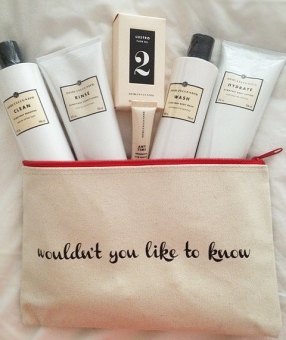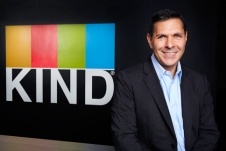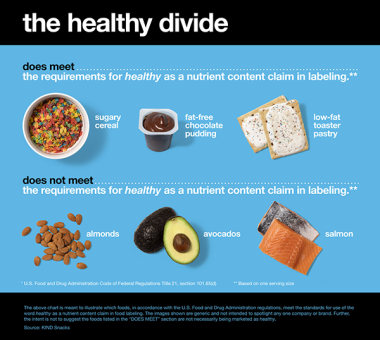The high pitched fervor over ‘big data’ has died down a bit, but only because companies are more focused on putting their noses to the grind stone to determine how to more effectively collect and analyze data, of all sizes, to improve their business performance.
The Center on Global Brand Leadership, in conjunction with the Aimia Institute, conducted a global study of more than 8,000 consumers to look deeper into the types of data consumers choose to share with companies, and what factors drive their willingness to share this data.
 We encourage you to examine our full report, What Is the Future of Data Sharing?, which offers information and insights on consumer attitudes towards data sharing, how those views are affected by industry category and country, and how brand trust positively impacts a willingness to share data.
We encourage you to examine our full report, What Is the Future of Data Sharing?, which offers information and insights on consumer attitudes towards data sharing, how those views are affected by industry category and country, and how brand trust positively impacts a willingness to share data.
In this piece, I will highlight three particular areas to help businesses think more strategically about how to better influence their customers to share data, and create more meaningful relationships with them.
1. The Four Data-Sharing Mindsets of Consumers
My co-author, David Rogers, and I wanted to better understand how certain attitudes towards data sharing might help predict which segments of consumers are more willing to share data. Through a factor analysis we were able to effectively split our respondents along two differentiating attitudes:
- Defensive attitude axis
This categorized consumers according to whether or not they had: 1) made up personal details to avoid giving away real information, or 2) had taken steps to limit companies from tracking them online.
- Sharing attitude axis
This categorized consumers according to their attitude towards sharing personal information to receive relevant offers and discounts.
Within those differentiated attitudes, we further identified four data-sharing mindsets:
- Defender (43% of survey participants): Consumers who are not happy to share and are guarded against companies asking for their data.
- Savvy and in control (24% of survey participants): Consumers who are happy to share, while keeping control of how much, when, and with whom.
- Resigned (23% of survey participants): Consumers who are not guarded, but aren’t happy about sharing, either.
- Happy go lucky (10% of survey participants): Consumers who are not guarded against sharing their data and are happy to do so.

[Click here for the full infographic.]
One of the surprising things we found was that 70% of the people who are happy to share their data for relevant value from a company are also taking defensive actions at times to protect the data they share. Being attentive about one’s data and being happy to share it are not mutually exclusive.
Most interestingly, among all four Mindsets these “protective but happy to share” consumers – the Savvy and In Control mindset – are more comfortable with how companies handle their data, more willing to share various data points, and more influenced by brand trust.
While we are wary of making predictions of generational attitudes into the future, we do believe that the impact of growing up in a hyper-connected society will remain as generations grow older. Given this, the much larger percentage of Millennials and Generation X members in the Savvy and In Control mindset should offer companies hope for building stronger consumer relationships over time.
What is the takeaway for companies? In order to build a “win-win” scenario with your customers when it comes to collecting their data, a company must provide transparency about how they are using data and also give consumers a level of control on how they choose to share their data. In addition, companies must demonstrate how customers will get value from sharing non-required data points.
2. People Do See Value in Traditional Loyalty Program Offers
Not surprisingly, consumers show clear interest in traditional loyalty/rewards program offers and benefits.

[Click here for full infographic.]
Sharing an e-mail address in return for an offer was by far the most common piece of data consumers were willing to share, and this was true across all age demographics. When looking towards the future, however, we found that younger generations – Millennials and Generation X – were up to twice as likely to share other non-required types of data. For example, 23% of Millennials and 16% of Generation X were willing to share their mobile phone data, as averaged across all 10 offers, while only 11% of Boomers and 8% of the Silent Generation were willing to do so.
As the data shows, consumers report greater interest in offers that are more direct and financial in nature – rewards, cash back, coupons – but a majority do also show interest in offers that are less direct and more experiential – recommendations and tools to help them make decisions. Given this, firms have a real opportunity to seek information from their own customers and develop personalized offers that match the interests of different groups of customers – sometimes at lower costs than promotional efforts with financial incentives.
3. New Kinds of Data-Enabled Benefits Present Future Possibilities
To better understand where the future might lie for companies, we also wanted to examine new kinds of value that are being developed out of personal data sharing efforts. Netflix and Amazon, for example, spurred the use of aggregated customer data to improve individual user experiences through product recommendations. And services such as Mint and Billguard are compiling financial information and providing insights back to consumers in order to help them make better decisions and protect against fraudulent or unauthorized finance charges.
We classified these new efforts as “data-enabled benefits” and asked respondents how likely they were to be interested in exchanging non-required personal data for such offers.

[Click here for the full infographic.]
Given the fact that these new types of benefits entered the marketplace in just the past few years, we were encouraged that many consumers already agree that there is an interesting value exchange to be had by exchanging their data in return for these benefits.
Once again, the Savvy and In Control mindset shows the greatest affinity towards sharing data in exchange for these new kinds of benefits:

As firms constantly aim to innovate and develop creative new experiences for customers, this data points to a clear opportunity for them. Companies can build their brand and strengthen customer relationships by crafting value-added features for customers that are developed by analyzing and sharing insights on the very data that they hope consumers will share with them.
As Prof. Michael Schrage from MIT has nicely phrased it, “Making customers better makes better customers…. Customers need to learn from you almost as much as you need to learn from customers. Serious customer experience design debates in organizations should focus almost as much on customer learning as customer delight.”
BY MATTHEW QUINT


 In an interview with the
In an interview with the 







